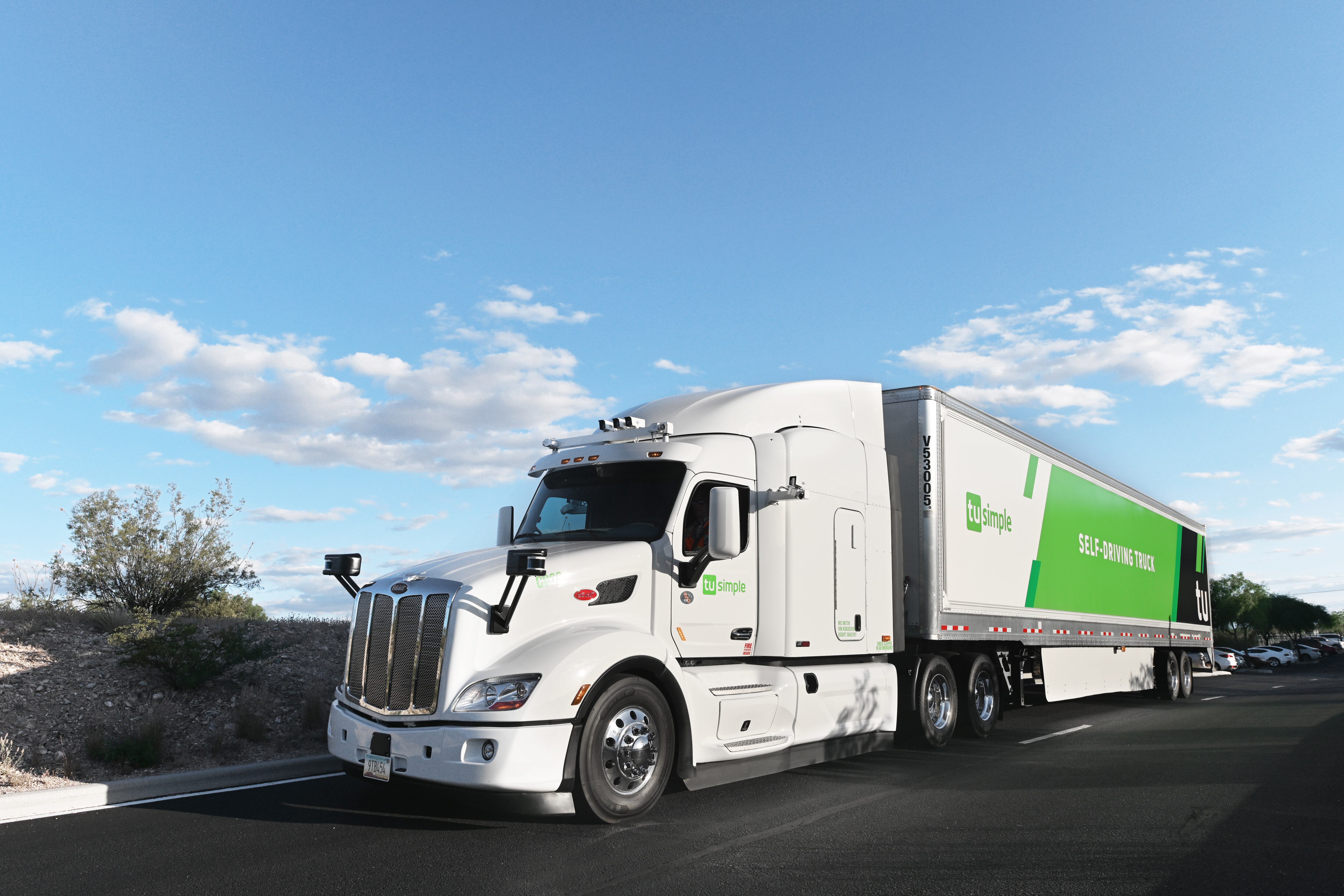The United States Postal Service completed a self-driving delivery truck pilot program May 31 with all deliveries made ahead of schedule and without any traffic incidents, according to the autonomous trucking company TuSimple.
USPS partnered with TuSimple to deliver mail between USPS facilities in Phoenix, Arizona, and Dallas, Texas, for two weeks. The trucks drove autonomously 22 hours one-way on the 1,000-mile route, but had a safety engineer and driver on board.
Robert Brown, head of public and government affairs at TuSimple, said the Phoenix-to-Dallas haul is the “ideal” route for self-driving technology trials because of the Southwest’s good weather and the route’s length, which requires the type of human team driving that the vehicles could replace.
Federal regulations currently cap human long-haul truckers at 11 hours of drive time per day. In a press release, TuSimple said that its trucks are “intended to free human drivers to focus on the shorter, more dynamic and closer to home routes.”
“For the actual real deployment of this technology, you’re going to see it in this long-haul, line-haul marketplace,” Brown said. “So that’s what we were most excited about; this is the first real route that this technology will flourish in, especially in the beginning.”
USPS is currently looking to replace its decades-old fleet of vehicles, but also faces a precarious financial reality. USPS projects it will have to increase spending 70 percent to cover costs over the next 10 years, including new vehicle expenses, according to a 2018 Government Accountability Report. USPS also projects that vehicle replacement will cost $821 million per year for 10 years.
“This pilot is just one of many ways the Postal Service is innovating and investing in its future,” a USPS spokesperson said. “We are conducting research and testing as part of our efforts to operate a future class of vehicles which will incorporate new technology to accommodate a diverse mail mix, enhance safety, improve service, reduce emissions, and produce operational savings.”
Both USPS and TuSimple declined to comment on the cost of the pilot program and the specific measures of success.
“We’re excited about the project and we feel like it went well,” Brown said. “We’re looking forward to working with the Postal Service in the future."
TuSimple’s trucks use a computing system from NVIDIA, a technology company, to guide its trucks. The hardware and software from NVIDIA help develop the deep learning algorithms’ recognition of different cars and street signs, as well as on-board data processing.
“The challenge with self-driving is it has to be safety critical and so we’re really working on perfecting the technology and being able to ensure that not only do we get it right but we never get it wrong,” said Danny Shapiro, senior of director of automotive at NVIDIA.
The shipping industry also faces a significant shortage of truck drivers nationwide, a problem self-driving vehicles could solve. According to 2015 American Trucking Association report, the shipping industry is short nearly 50,000 drivers, a number it said will increase to 175,000 by 2024.
Brown said that TuSimple will provide USPS with key performance indicators within 30 days of the end of the test. A USPS spokesperson declined to comment on next steps.
Andrew Eversden covers all things defense technology for C4ISRNET. He previously reported on federal IT and cybersecurity for Federal Times and Fifth Domain, and worked as a congressional reporting fellow for the Texas Tribune. He was also a Washington intern for the Durango Herald. Andrew is a graduate of American University.





